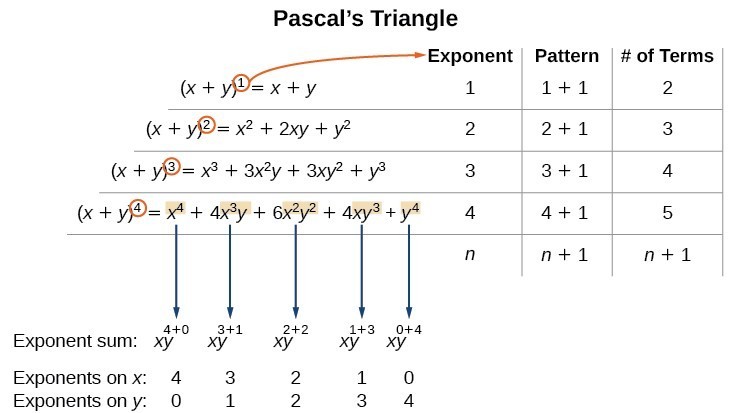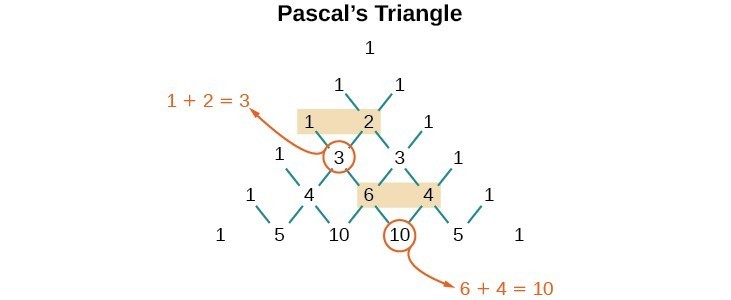Using the Binomial Theorem
When we expand by multiplying, the result is called a binomial expansion, and it includes binomial coefficients. If we wanted to expand , we might multiply by itself fifty-two times. This could take hours! If we examine some simple binomial expansions, we can find patterns that will lead us to a shortcut for finding more complicated binomial expansions.
First, let’s examine the exponents. With each successive term, the exponent for decreases and the exponent for increases. The sum of the two exponents is for each term.
Next, let’s examine the coefficients. Notice that the coefficients increase and then decrease in a symmetrical pattern. The coefficients follow a pattern:
.
These patterns lead us to the Binomial Theorem, which can be used to expand any binomial.
Another way to see the coefficients is to examine the expansion of a binomial in general form, , to successive powers 1, 2, 3, and 4.
Can you guess the next expansion for the binomial
 Figure 1
Figure 1- There are terms in the expansion of .
- The degree (or sum of the exponents) for each term is .
- The powers on begin with and decrease to 0.
- The powers on begin with 0 and increase to .
- The coefficients are symmetric.
- Introduce , and then for each successive term reduce the exponent on by 1 until is reached.
- Introduce , and then increase the exponent on by 1 until is reached.
.
But where do those coefficients come from? The binomial coefficients are symmetric. We can see these coefficients in an array known as Pascal's Triangle, shown in Figure 2.
 Figure 2
Figure 2
A General Note: The Binomial Theorem
The Binomial Theorem is a formula that can be used to expand any binomial.How To: Given a binomial, write it in expanded form.
- Determine the value of according to the exponent.
- Evaluate the through using the Binomial Theorem formula.
- Simplify.
Example 2: Expanding a Binomial
Write in expanded form.Solution
- Substitute into the formula. Evaluate the through terms. Simplify.
- Substitute into the formula. Evaluate the through terms. Notice that is in the place that was occupied by and that is in the place that was occupied by . So we substitute them. Simplify.
Analysis of the Solution
Notice the alternating signs in part b. This happens because raised to odd powers is negative, but raised to even powers is positive. This will occur whenever the binomial contains a subtraction sign.Try It 2
Write in expanded form.a.
b.
Solution